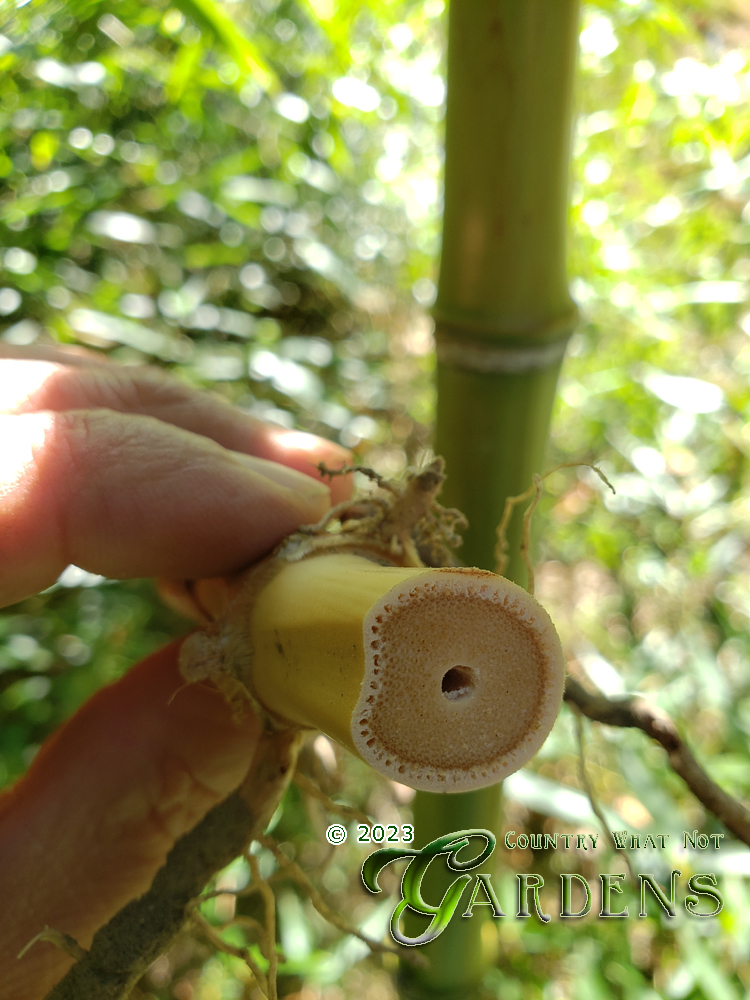| |
|
|
|
|
 |
|
Like us and follow us on Facebook for availability updates and tips on bamboo growing and management.
|
|
|
| |
|
|
|
|
Back to Prices
Phyllostachys atrovaginata
Maximum height: 40 ft.
(Yet unknown for zone 5)
Maximum diameter: 2 3/4 in.
(Yet unknown for zone 5)
Minimum temperature: -15ºF
(The roots are at least 10ºF more hardy.)
Digging Season: Late October through December, or until the ground freezes.
This timber bamboo is one of only two bamboos under that classification that we can grow here in zone 5. The other one is Phyllostachys parvifolia.
We base our size and hardiness data on a ten year trial growth period here at the nursery. We're only into year six. So the potential size here in our region is yet unknown.
One thing we have observed is that this species doesn't seem to be as heat and drought tolerant as some other members of this genus.
On hot summer days the leaves tend to cup when grown in drier soil, but not quite curl, in an effort to reduce moisture loss though the leaf surface.
This species has air channels in the outer walls of the rhizomes. This is an adaptation for growing in wetter soils.

While it will grow in wetter soils, it still needs to be first established in well drained soil and allowed to spread into wetter areas on its own timing.
As with the seeming lesser heat and drought tolerance of this species, we've also observed less tolerance for winter winds. Although it has proven to be quite cold tolerant.
For the first few winters after being planted it did top-kill. Once established for a few years it stopped top-killing during winter. It does sustain foliar wind burn and some twig damage, but the old culms rebud in the spring.
|

